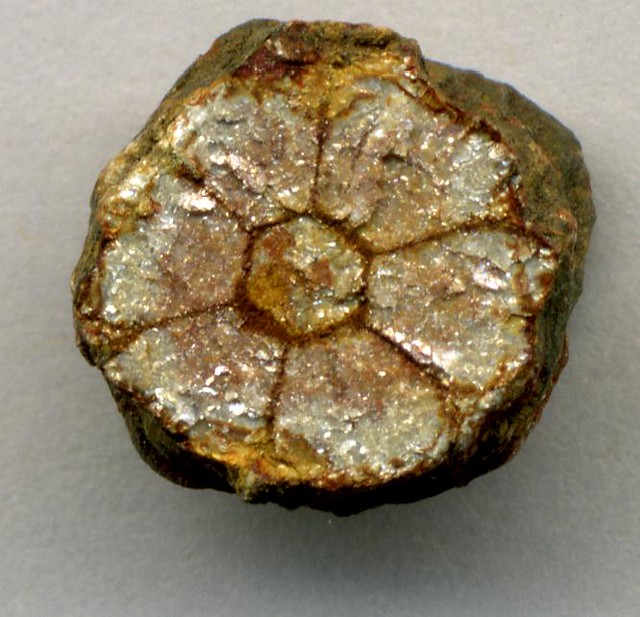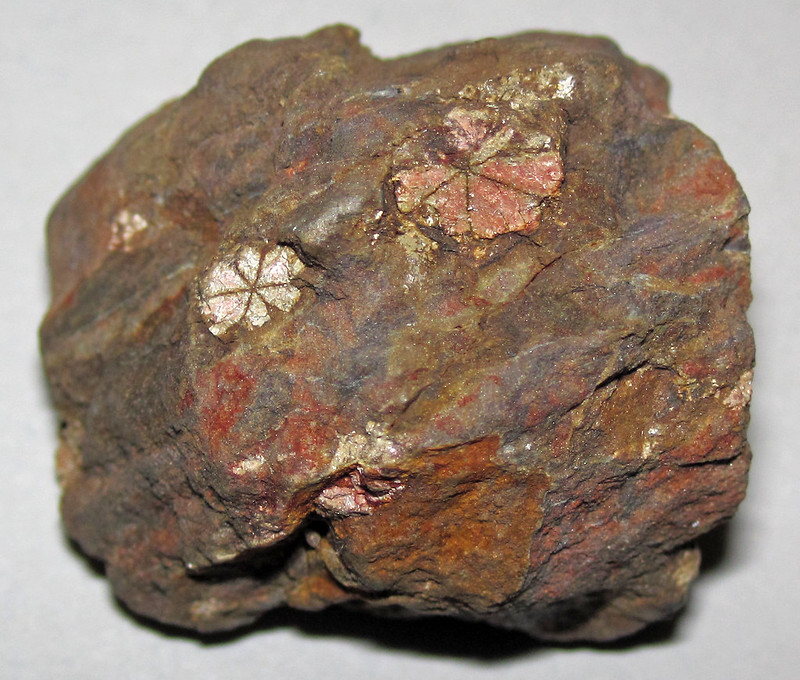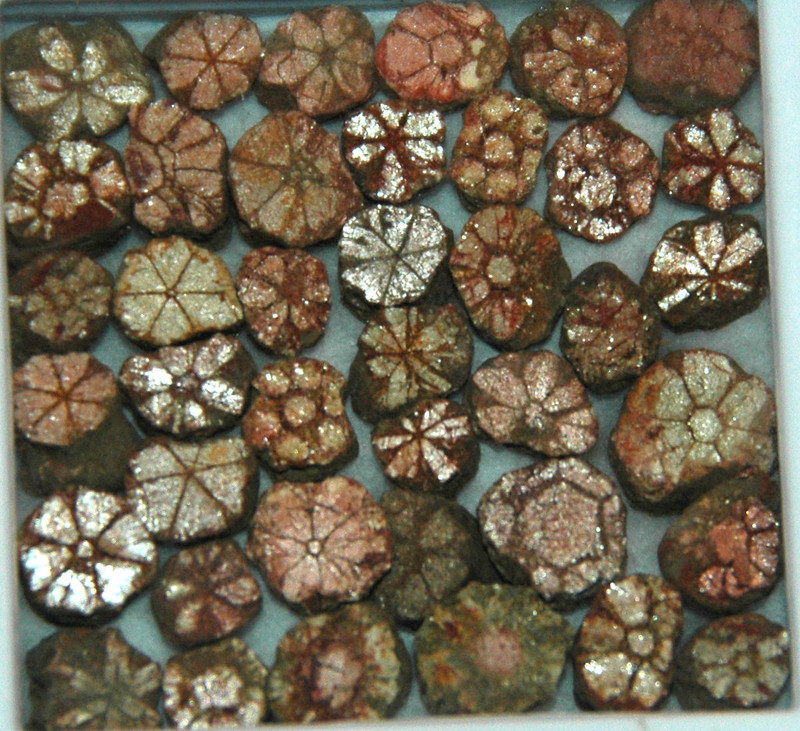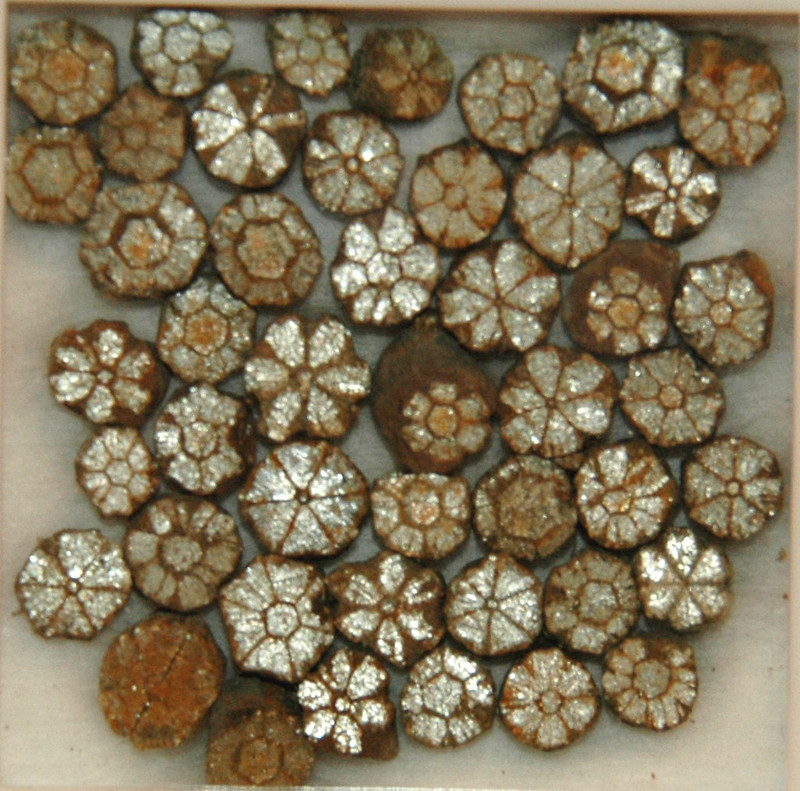Cherry blossom stones are incredibly unique and rare, primarily because their formation requires going through two distinct and intense metamorphic processes.

What Are Cherry Blossom Stones?
Cherry blossom stones carry the ethereal beauty of cherry blossoms deep within their geologic makeup, intriguing mineral enthusiasts and nature lovers alike. These unique formations are found within hornfels, a type of fine-grained metamorphic rock that forms under intense heat. Inside the stones, mica pseudomorphs of complex cordierite-indialite crystals take on a striking floral resemblance, echoing the appearance of cherry blossoms in full bloom!
The natural wonder of cherry blossom stones lies in their subhexagonal shape, composed of seven individual crystals. At the center, a dumbbell-shaped formation gives rise to the petal-like structures that spread outward, mimicking the delicate symmetry of cherry blossom petals.
Despite their name, cherry blossom stones are not related to the actual flora of cherry blossom trees in any way at all, but they capture the imagination by encapsulating the essence of the blossoms in mineral form. Collectors and geologists alike are captivated by these stones for not only their aesthetic, but also their intriguing and complex formation process.
Origins of Cherry Blossom Stones
Cherry blossom stones, known as sakura ishi in Japan, captivate both geologists and cultural enthusiasts alike due to their unique formation and the cultural value they hold.

Cultural Significance
The cultural significance of these stones is deeply rooted in Japanese tradition, where the cherry blossom (sakura) is held in high esteem and symbolizes ephemeral beauty. Cherry blossom stones embody the aesthetic and spiritual qualities that cherry blossoms represent in Japanese culture, making them sought after for both personal collections and as subjects in various forms of art.

image: James St. John/cc
Physical Characteristics
Mineral Composition
Cherry blossom stones, known scientifically as Sakura Ishi, are formed from a mineral called mordenite. This mineral belongs to the zeolite group and often appears in cavities of volcanic rock. The stones typically contain a base of lamellar, or layered, mordenite which provides the foundation for the blossoming crystal structure.
Appearance and Texture
Upon closer examination, one will find that cherry blossom stones exhibit a unique flower-like pattern. This pattern resembles cherry blossoms, with radiating crystals forming petal-like structures against a pale, often pinkish base. Their texture ranges from smooth surfaces on the outer parts to slightly fibrous textures near the center, which are characteristic of the mordenite’s crystal habit.

Locations and Occurrences
Cherry blossom stones are found embedded in shale deposits. The most noteworthy occurrences of these stones are in the Higashi-agatsuma town of Gunma Prefecture. Researchers and enthusiasts often visit this region to observe and study cherry blossom stones in their natural habitat. Another location in Japan known for these stones is in the Kuzu area of Tochigi Prefecture, where they also naturally appear within the matrix of the surrounding rock.
Cherry blossom stones are not widely found outside of Japan, making them a rare find for mineral collectors around the world. They are considered a geological treasure, representing the intricate natural processes that can lead to such delightfully patterned stones.

